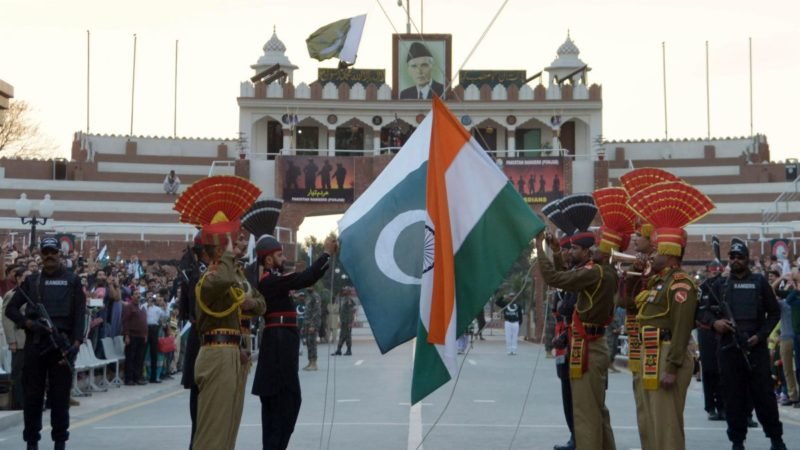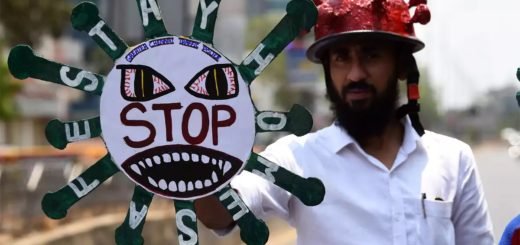Breaking The Ice In India-Pakistan Relations

“Given the complete Dead End in the relationship, India and Pakistan would do well to look back into the past and ponder over restarting the dialogue process on the lines of Composite Dialogue Process”
Pakistan is India’s most difficult neighbour and cannot be dealt with like India’s other South Asian neighbours for a number of reasons – its mindset; it strategic significance for outside powers; its military nuclear and missile capabilities and its territorial dispute with India over Kashmir. However, the most important difference between Pakistan and India’s other neighbours is that for India the relationship with Pakistan is as much a domestic as a foreign policy issue, even if Indian politicians are reluctant to admit this.
Notwithstanding all the odds that the relationship currently faces, it can still try to build a manageable and a minimal degree of cooperation by taking a leaf out of the past. Applying the Functionalist framework of IR to the relationship, India can still hope to break the ice and start an earnest effort towards normalization of relations. Former Prime Minister Vajpayee rightly remarked: “ We can change our friends, but we cannot change our neighbours”. In this spirit, Composite Dialogue Mechanism and the Composite Bilateral Dialogue could offer a viable alternative to restart the dialogue and move towards a more nuanced approach to the relationship.
The Functionalist Approach
Richard Cobden, one of the most prominent scholars of this approach in the discipline of IR, once opined “ Politicians should be kept out if peace is the ultimate goal”. The central theme of the approach is to develop interlinkages to avoid conflicting relations. EU can be cited as a shining example of this approach put to practise. According to this approach, the non-political class such as engineers, economist and technicians should play a pivotal role in the process of peacebuilding. The approach primarily rests on the assumption that there are certain issues which are “thorny” and form the “bone of contention” in the relationship between two hostile neighbours. Thus, it argues to segregate the issues on the basis of “High Politics” (Non-Doable) and “Low Politics” ( Doable). The issues which have maximum chances of yielding positive results are first taken up for discussion and interlinkages are built, which then have a spillover effect over other areas as well. Eventually, the idea is to develop interlinkages so deep that it becomes difficult for anyone party to break them and go for war. The basic idea is to bring in the “Stakeholder” approach to the relationship. It is almost akin to the concept of developing economic interdependence, as was put forth by Thomas Friedman of the economic interdependence school and the idea of “trading states” rather than “military states” as was propounded by Richard Rosenav.
Functionalism has also been proposed by scholars such as David Mitrany and Ernst Hass. Hass argued we cannot leave the integration process solely to the responsibility of non-political segment. At some point of time, political class needs to be involved to take tough and difficult decisions.

Origin and Idea Behind Composite Dialogue Mechanism
The idea of having a Composite Dialogue mechanism was first mooted by former Prime Minister IK Gujral, an apt example of the “Gujral Doctrine” put to practice. The idea was to have an all-encompassing and structured dialogue on both “Doable” as well as supposedly “Non-Doable” issue with a basic idea of achieving something rather than nothing. Initially, it began with eight issues comprising; Peace and security, confidence-building measures, Jammu and Kashmir, Siachen, Sir Creek, Tulbul Project, Economic and commercial cooperation, Counterterrorism, narcotics control and People-to-people exchanges.
Tangible Outcomes:
While a sense of scepticism prevailed as Jammu & Kashmir was one of the issues, the dialogue, nevertheless, yielded some concrete outcomes on certain issues. Cross LOC trade and travel was allowed and the idea of having LOC as a “Soft Border” was successfully implemented. Demilitarization of the civilian spaces has been hailed as one of the concrete outcomes of the talk. Joint administration of the territory and the issue of Sir Creek and Siachen on the verge of resolution has been counted as some of the real tangible outcomes of the process. It is even said that both Prime Minister Manmohan Singh and General Pervez Musharraf were very close to a “durable solution” on Kashmir problem.
End of Phase I
The phase I of the talks were brought to an abrupt end by the 26/11 Mumbai terror attack and General Musharraf was thrown out of power and ultimately the lobby that didn’t want peace could take a breath of respite. All the gains of the sheer hard work and the nimble diplomacy during the era of both Vajpayee ( Agra Summit) and Manmohan Singh were lost and the relationship hit a dead end. However, certain gains made on doable issues ushered in an “era of thaw” in the otherwise hostile relationship.
Phase 2 and the failure of talks
In 2010, talks started again and it was named “resumed dialogue” instead of composite dialogue. There were minor differences from the composite dialogue, as this time it included counter-terrorism, including Mumbai attack trials and humanitarian issues, which was to be overseen by the home secretary. Along with peace and security, including CBMs, and Jammu and Kashmir, cultural exchanges also came under the foreign secretary. Other subjects and responsibilities remained unchanged and there were two rounds of dialogue. In 2012 talks stopped the following the firing on the border and beheading of an Indian soldier.

Phase 3: An Earnest Effort And The Way Ahead
An earnest effort to revive the dialogue process was taken in 2015 by the Modi government and the process was renamed as Composite Bilateral Dialogue (CBD) instead of Composite Bilateral Mechanism (CBM). Along with these two more issues were added i.e. Humanitarian Issues and Religious Tourism. The progress in the third phase has been rather slow and has been marred by repeated terrorist attacks by Pakistan. The dialogue hit a dead end by 2016 with the Uri terror attack. Earlier, in 2015, the Gurdaspur terrorist attack took place. Since then, both counties have neither talked at the highest level nor at any other level. A repeated boycott by India through the policy of Isolating Pakistan and Naming and Shaming them and “ No Talks With Terror” have to lead to near-complete stagnation in the bilateral relationship between the two countries.
Thus, going ahead with the kind of complex relationship that the two neighbours share and Pakistan’s troubled identity, its mindset, it’s the strategic significance for the outside powers, it’s rogue behaviour and it’s weak civilian government, the best possible and by far the most practical solution would be to “manage” the relationship. Notwithstanding all the vexatious issues, both the neighbours can still cooperate on softer issues, such as religious tourism, as they have done in the case of Kartarpur Sahib. Although certain security concerns have been flagged regarding it, that must be sorted out bilaterally and must not derail the entire talk. Other possible areas of cooperation could be in the field of Bollywood, Trade as well as Cricket. India must not compromise with its security concerns at any cost, whilst also ensuring that something is achieved rather than nothing. As the two countries develop interlinkages and become stakeholders in each other economy and society, a temporary peace could be ushered in once again.
Taking a long-term view, India must try to persuade Pakistan that the two countries can together make South Asia a formidable force in the world. India – Pakistan confrontation is only helping outside power. However, Pakistan’s principal foreign backers namely the US, China and Saudi Arabia have their own interest and therefore, their own policies vis a vis Pakistan. It would be realistic to recognise that continued India Pakistan tensions and confrontation probably suit one or more of them. India, of course, needs to try its best to persuade Pakistan’s foreign backers to change their current approach and make way for a more stable, democratic Pakistan that has close ties with India. But as realpolitik dictates that this is unlikely to be a bear fruit, India must have an autonomous Pakistan policy that combines a juicy carrot with a heavy stick. While we have already put to use the heavy stick in the form of preemptive strikes, diplomatic isolation of Pakistan and by exposing Pakistan at FATF, UN, BRICS, SCO and OIC among others, restarting the dialogue process on lines of CDM and CBD could be the practical application of juicy carrot now.


















